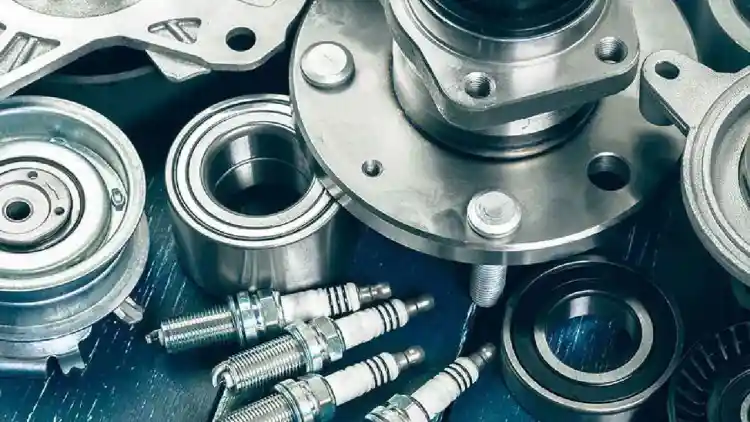- Why 2017 Was a Big Year for Cars
- Top Cars of 2017
- Trends That Shaped 2017
- Lessons Learned from 2017
- FAQ
The year 2017 was a remarkable one in the automotive industry, filled with exciting advancements, standout models, and trends that shaped the future of driving. Whether it was the surge in SUV popularity or the growing interest in electric vehicles, 2017 set the tone for many of the innovations seen today. Let’s dive into the highlights of this pivotal year for cars.
Why 2017 Was a Big Year for Cars
In 2017, the automotive sector experienced rapid growth fueled by changing consumer preferences and advancements in technology. Not only did vehicle sales hit impressive numbers globally, but electric and tech-enhanced cars gained traction. Here's a look at key aspects of the car market that made 2017 unforgettable:
Key Events in 2017
Sales Boom: Many car brands enjoyed record-breaking sales, reflecting strong global demand for reliable and versatile vehicles.
Eco-Friendly Push: Governments worldwide introduced stricter emission policies, encouraging automakers to prioritize cleaner engines and innovative designs.
Technological Integration: Features like touchscreen interfaces, backup cameras, and smartphone connectivity started becoming standard in offerings even from budget-friendly brands.
These highlights showcased the collective shift towards smarter, greener, and safer vehicles.
Top Cars of 2017
The standout cars of 2017 brought a blend of style, performance, and practicality. Categorizing them by type helps us appreciate how diverse the offerings of this year were.
Best SUVs and Crossovers
SUVs continued their upward trend, becoming the favorite choice for families and adventure-seekers alike. Some of the best models included:
HondaBahrain HondaEgypt HondaKSA HondaKuwait HondaOman HondaQatar HondaUAE Honda CR-V: Known for its spacious interior and impressive fuel efficiency, this compact SUV became a favorite among families.
Toyota HighlanderUAE Toyota HighlanderBahrain Toyota HighlanderKSA Toyota HighlanderOman Toyota HighlanderQatar Toyota HighlanderEgypt Toyota HighlanderKuwait Toyota Highlander: Packed with advanced safety features, the Highlander proved perfect for long journeys and scenic road trips.
Best Family Cars
Family cars excelled in combining comfort, reliability, and affordability. Top models included:
Ford Fusion: A midsize sedan that offered sleek looks, smooth handling, and excellent fuel economy.
Toyota CamryKSA Toyota CamryKuwait Toyota CamryQatar Toyota CamryOman Toyota CamryBahrain Toyota CamryEgypt Toyota CamryUAE Toyota Camry: Renowned for its reliability and low maintenance costs, this car dominated urban streets worldwide.
Other Standout Models
2017 saw innovations across all categories:
Electric Cars: The NissanKSA NissanUAE NissanKuwait NissanOman NissanQatar NissanBahrain NissanEgypt Nissan Leaf gained popularity as it provided a quiet, green driving experience while appealing to those looking for cost-effectiveness.
Sports Cars: The MazdaUAE MazdaKSA MazdaQatar MazdaKuwait MazdaBahrain MazdaEgypt MazdaOman Mazda MX-5 shone with its fun and engaging driving dynamics, capturing the hearts of enthusiasts.
These vehicles demonstrated how automakers catered to different lifestyles and needs.
Trends That Shaped 2017
While cars themselves stole the spotlight, the trends that emerged in 2017 paved the way for long-term changes in the industry.
Rise of Electric Vehicles
Transition to Green Energy: Automakers stepped into the eco-friendly domain, introducing more hybrid and electric vehicles to align with global emission standards.
Market Momentum: Though sales numbers were still modest, increasing driver interest hinted at a greener future.
Safety Innovations
Backup Cameras: A feature that was once considered premium became standard in most cars, reducing the risk of parking mishaps.
Smart Safety Systems: Emergency braking and lane-keeping assistance were widely adopted, fostering safer driving experiences.
Everyday Technology Integration
User-Friendly Apps: Cars equipped with systems that allowed drivers to plug in their mobile devices simplified navigation and music streaming.
Voice Commands: Technology eased the stress of multitasking behind the wheel, providing an interactive and seamless user experience.
These trends helped transform cars into smarter machines that catered to both convenience and safety.
Lessons Learned from 2017
The automotive advancements made in 2017 left a lasting impact on the roads today. The decisions made that year shaped modern driving experiences and changed how cars are perceived.
Long-Term Impacts
Built to Last: Vehicles produced in 2017 have proven durable, with many still running efficiently today.
Inspiration for Innovation: The focus on eco-friendliness, safety, and connectivity spurred global automakers to aim higher, leading to transformative updates in subsequent years.
Looking back, 2017 was a year that boldly set the stage for the future of the automotive industry.
FAQ
Q: What were the most popular cars globally in 2017?
A: SUVs, like the Honda CR-V, and sedans, like the Toyota Camry, were among the most popular vehicles for their reliability, practicality, and exceptional value for money.
Q: How did trends in 2017 affect electric car adoption?
A: Automakers began to prioritize electric options due to global policies encouraging environmentally friendly transport. While adoption was slow, the groundwork for today’s surge was laid in that year.
Q: Are 2017 model cars still reliable for regular use today?
A: Absolutely. Proper maintenance ensures that many cars from 2017 still provide excellent service, thanks to designs focusing on durability and efficiency.
Q: What made 2017 stand out in automotive history?
A: The year included a perfect mix of advanced safety technologies, eco-friendly initiatives, and user-focused driving conveniences that redefined how we view modern vehicles.
Q: Were there any notable shifts in consumer behavior in 2017?
A: Consumers began leaning towards SUVs and crossovers as family cars, while also exploring electric vehicle options, signaling a change in preferences that continues today.
Read More:
Mini Van Magic:Your Perfect Family Vehicle Guide
Mitsubishi Galant:The Enduring Sedan Loved by Drivers Worldwide
FJ Cruiser 2025:Is Toyota's Legendary SUV Worth a Second Look?












